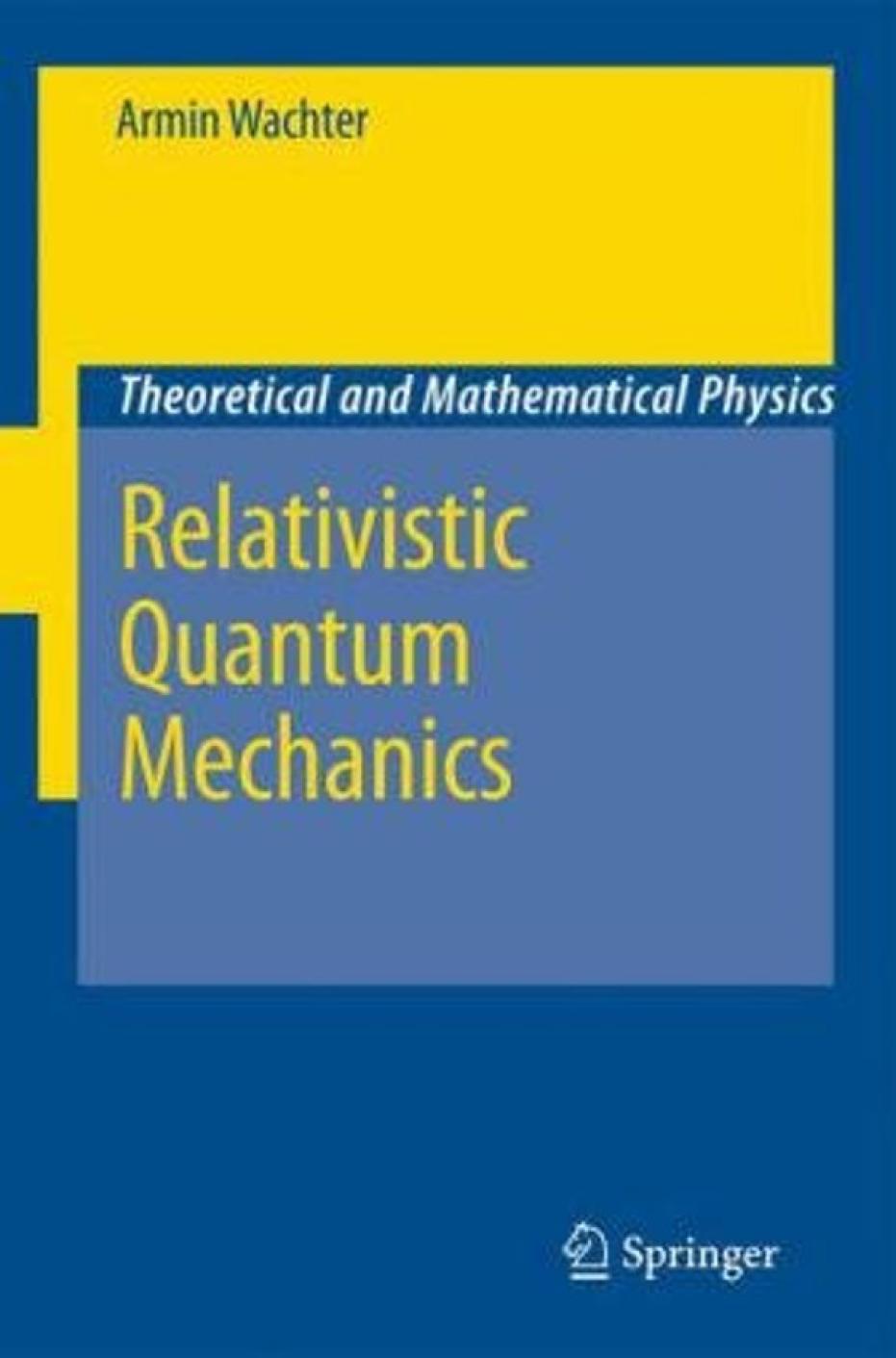
Relativistic Quantum Mechanics PDF
Preview Relativistic Quantum Mechanics
It is more important to repair errors than to prevent them. This is the
quintessence of the philosophy of human cognition known as critical ratio-
nalism which is perhaps at its most dominant in modern natural sciences.
According to it insights are gained through a series of presumptions and
refutations, through preliminary solutions that are continuously, rigorously,
and thoroughly tested. Here it is of vital importance that insights are never
verifiable but, at most, falsifiable. In other words: a natural scientific theory
can at most be regarded as “not being demonstrably false” until it can be
proven wrong. By contrast, a sufficient criterion to prove its correctness does
not exist.
Newtonian mechanics, for example, could be regarded as “not being
demonstrably false” until experiments with the velocity of light were per-
formed at the end of the 19th century that were contradictory to the pre-
dictions of Newton’s theory. Since, so far, Albert Einstein’s theory of special
relativity does not contradict physical reality (and this theory being simple
in terms of its underlying assumptions), relativistic mechanics is nowadays
regarded as the legitimate successor of Newtonian mechanics. This does not
mean that Newton’s mechanics has to be abandoned. It has merely lost its
fundamental character as its range of validity is demonstrably restricted to
the domain of small velocities compared to that of light.
In the first decade of the 20th century the range of validity of Newtonian
mechanics was also restricted with regard to the size of the physical objects
being described. At this time, experiments were carried out showing that
the behavior of microscopic objects such as atoms and molecules is totally
different from the predictions of Newton’s theory. The theory more capable
of describing these new phenomena is nonrelativistic quantum mechanics and
was developed in the subsequent decade. However, already at the time of its
formulation, it was clear that the validity of this theory is also restricted as
it does not respect the principles of special relativity.
Today, about one hundred years after the advent of nonrelativistic quan-
tum mechanics, it is quantum field theories that are regarded as “not being
demonstrably false” for the description of microscopic natural phenomena
